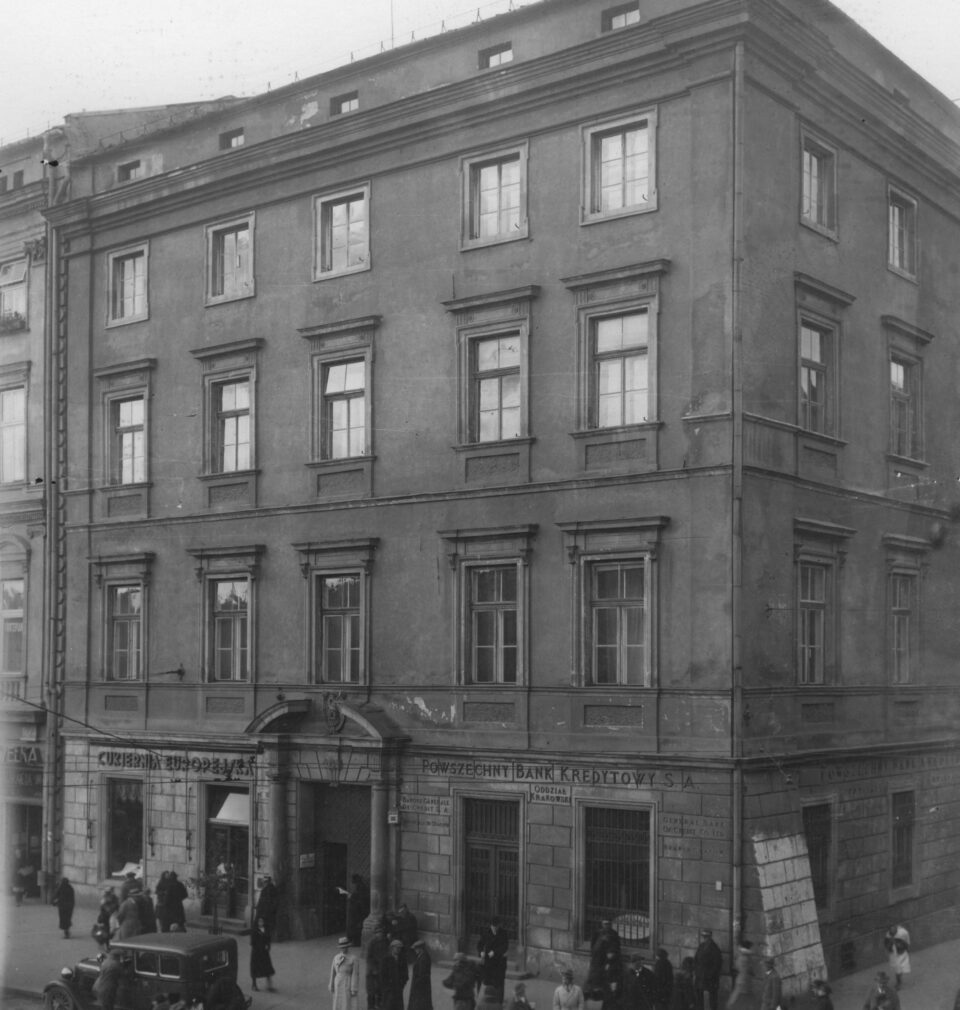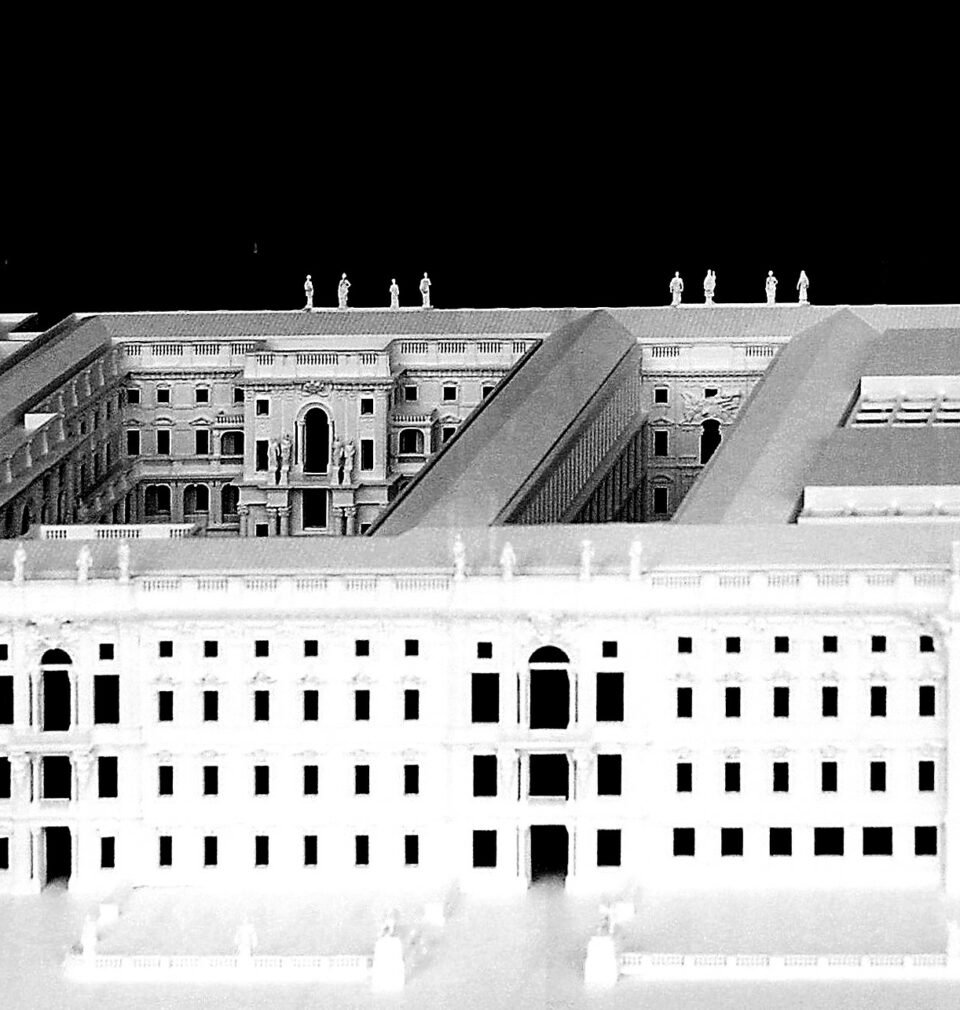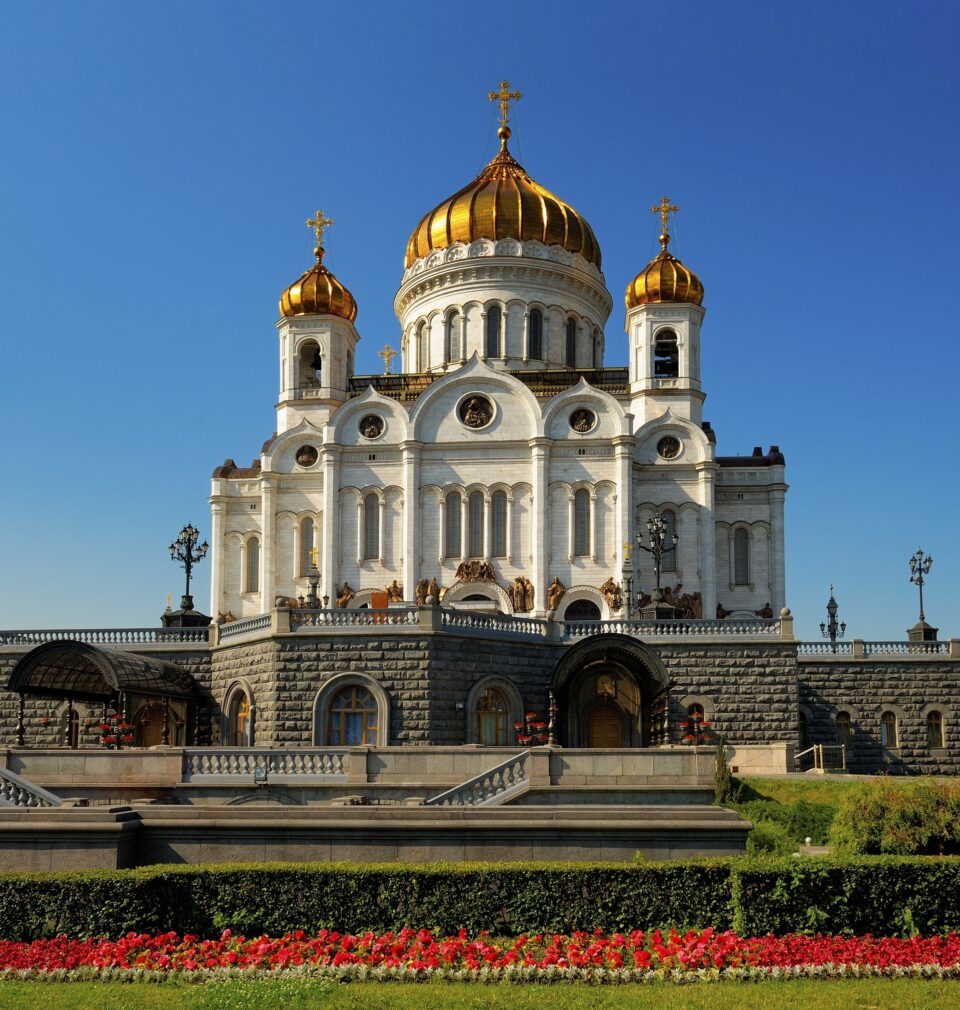
The City and the Museum
A Museum Inside a Historic City – Conflict or Harmony?
Publication: 17 August 2021
TAGS FOR THE ARTICLE
TO THE LIST OF ARTICLESToday’s presence of museums in Polish cities demands redefining their role and reigniting public debate on it. This debate must be attended by museum workers, architects, urban planners, conservators, but also local government officials and anthropologists of culture. One thing is not in doubt: there is no conflict around the shared belief that museums must become modern institutions of culture, reacting to the unquestionable changes in the anthropological awareness.
The question from the title only seems to be provocative. And the answer suggesting a lack of conflict between the presence of the museum in a city (especially a historic one) and today’s urban functions only seems to be obvious. The social and political changes of the last twenty years, and particularly of the last decade, significantly transformed the relations between the city and the museum present in it. This process has become the subject of a lively discussion in the museum community, regarding not only the doctrine of conservation and the architectural creations, but also the social aspects of the museums.
The present article concerns general problems with which, I am convinced, many Polish museums are struggling. But it is based mostly on Krakow experiences and particularly on the experiences of working at and managing the Historical Museum of the City of Krakow.
In principle, the rule of alliance and synergy between the city and the museum still holds. Museums contribute to the attractiveness of the city for tourists, are a supplementary source of information about it and provide natural venues for cultural events. With their potential of knowledge and collections, they promote the city not only in terms of tourism, but also in terms of general image and the economy. But it is impossible to ignore the fact that in the city-museum relations a number of factors generating misunderstandings and even conflicts have emerged, often centred around monuments, the approach to them, understanding their role and value. Perhaps these problems are perceived today only by the relatively small community of museum people and cultural managers, but there is a concern that if we do not clarify the knotty issues, a serious breach in mutual understanding and coexistence will appear. We must urgently take note of the fact that cities, especially the larger ones and those containing important treasures of historical heritage, are now significant cultural players.
Article 7.1.9 of the Local Government Act from March 8, 1990, clearly stipulates that the establishment and maintenance of institutions of culture, including museums, belongs to the tasks of the municipality or the borough. These responsibilities are even more precisely specified in the Act on the Organisation and Conducting of Cultural Activity from October 25, 1991. Articles 9.1 and 9.2 say: “1. Local government units organise cultural activity, creating local government institutions of culture, for which conducting such an activity is the primary statutory aim. 2. Conducting cultural activity is a mandatory task of local government units.” These provisions very clearly delineate the situation of cultural institutions, including museums, within the cities. But they also make it obvious that defining the direction of the activity of these institutions lies within the purview of local government. City authorities also possess instruments which make it possible to influence, to a certain degree, the profile of those institutions which are administered by the central government or the voivodeship, but because they are situated on the territory of a municipality, they participate in the cultural life of the city.
So what is the source of misunderstandings and conflicts? Museums have become powerful factors of social, cultural and urban changes, which generates increasing expectations. The problem is that these external expectations are primarily focused on visible change and success which may engender a conflict with the way museum people understand their mission. For a museum as an institution charged with the protection of cultural assets is by its very nature afraid of change and the word “success,” with a universally positive ring to it, has a slightly different meaning for a museum worker. When we move to collecting, that is the broadly conceived management of museum artefacts, we must conclude that for a museum worker success means acquiring and arranging such storage space which will provide conservation conditions allowing a long-term and secure keeping of the artefacts. From the point of view of external expectations such success is not a satisfactory achievement and even a proof of misunderstanding the needs of the society by museum staff, for incomprehensible reasons denying access to the artefacts to knowledge-greedy society and locking them up in storerooms. Secluded in museum cupboards, the priceless monuments and treasures veiled in mystery become easy prey for sensation-mongering journalists in the silly season. The tone of such articles is doubtlessly very irritating and dangerous for the museum community. In the philosophy of the European Union, the concept of balanced development is quite justifiably promoted. But in practice this means that such an investment as new storage space for a museum stands no chance for a subsidy from EU resources. This suggests that such storerooms make for unbalanced development, blind to the needs of society, serving neither the city nor its residents. It serves only the museum people? The question mark here is deliberate. Such an understanding of the role of the museum is exemplified by lack of storage space in the Historical Museum of the City of Krakow. In an unfinished and unused wing of a school at 336 Księcia Józefa, received from the municipality, we planned to create storage rooms. I will not relate the story of this investment, happily begun this year, other than saying that its present name is Thesaurus Cracoviensis – Centre for Conservation, Digitalisation and Storage of the Collections. With such a name and such language used in the application for a subsidy chances are high for scoring good points as a balanced investment project. Yet it is not just a question of language, but also of the underlying thinking. A thinking which is important, but also dangerous for it deprives the artefact in a museum of its intrinsic value and transfers it onto an attractive and multicoloured packaging.
Moving to another aspect of museum activity, we should note that museum projects have become important economic and even political investments. Local authorities quite justifiably and rightly ask questions about the profitability of institutions maintained by them, about the amount of money they have to pay per visitor, and so on. But on the other hand, we clearly see the germs of conflict between heritage protection, a natural mission of museums across the world, and the necessity of achieving such a level of efficiency by museums that they could take part in the market game. The thin red line between commercialisation and effectiveness is often crossed or ignored. Tensions of this kind are certainly felt with particular force by people running museums, who boastfully or repentantly speak to their overseer about the funds subsumed under the “own revenue” category, while their staff sends them signals which come down to a passionate plea: “We are not here to make money!” In this dialogue the role of a monument is concealed, but important. The painstaking care of a monument, its conservation and revitalisation make themselves felt on the costs side rather than the revenue side.
The use of architectural monuments by museums opens another area of conflict. All too often it is an internal conflict. An overwhelming majority of Polish museums are housed in historic buildings, in various ways adapted to museum purposes. The problem is particularly acute if the monument is located in a historic city. These museums usually reside in buildings of special value and importance, often icons of the city, region or even entire country. Many decisions about locating museums were made very long ago, sometimes as early as the 19th century. Social expectations concerning museums justified such decisions. A historic building, a kind of museum exhibit in its own right, was in perfect harmony with the type of museum where there was a hallowed atmosphere and separate spaces for the “common people” (exhibition) and the “priesthood” (research and conservation workshops). Contemporary global changes of the social and political systems generate new demands towards museums. The museum becomes a place of leisure, competing with such 21st century entertainment arenas as shopping centres, thematic parks and megaplexes wafting the smell of popcorn. This competition concerns economic space, but above all existential space. Museums are fighting for the contemporary man, who is infected with the omnipresent virus of consumerism and therefore loses his identity and the more profound aspect of his being. Museums take up this necessary struggle, becoming – to quote a contemporary philosopher Peter Sloterdijk – “another place,” that is a place allowing people to “acquire distance towards the rest of the world.”[1] To survive this economically unequal battle, museums have to supplement their functional and architectural programmes with gastronomic, entertainment and audiovisual spaces. It creates a twofold problem. First, museum people have to fill these new spaces with a sensible and verified content and second, they have to resolve conflicts between the necessity of protecting the historic fabric of their buildings and the necessity of their thorough-going reconstruction and redefinition following the new demands.
An excellent testing ground, not to say a theatre of war waged within our museum was the process of creating the conception and design of the Krzysztofory Palace, the main seat of the Historical Museum of the City of Krakow and one of the most valuable urban palaces in Poland. This extraordinary monument forms an almost extravagant accumulation of various cultural heritage assets. The multilayer murals from the fifteenth to early twentieth century; stonework from the early Middle Ages to modern and contemporary times; excellent sculptural work attributed to Baldassare Fontana; the unique woodwork; relics of medieval pavements and the earliest stone buildings in Poland from before the Krakow charter (1257). The palace, whose beginnings date back to a stone keep from the second half of the 13th century and which in every succeeding century was undergoing changes in terms of architecture and ownership, in 1964 became the main seat of the Historical Museum. In 1979–2005 a permanent exhibition called Z dziejów i kultury Krakowa (From the History and Culture of Krakow) was staged in the en suite rooms on the first floor. Other storeys were taken up with small, temporary exhibitions space, offices, workshops and storerooms. It meant that only one sixth of the palace was open to the public in the service of the history of Krakow. In 2003 the museum staff acknowledged the necessity to change this situation. In the following years, amid an often painful conflict, a design was produced, reconciling the necessity of protecting the invaluable heritage with the functionality of the museum. The design was created in the studio of Marek Cempla, an architect and expert in the field of history of architecture, harmoniously combining the art of designing buildings with an excellent feel for conservation. The final result, prepared of course with a continuous involvement of people from the museum, is a compromise and offshoot of many resolved conflicts, which sometimes seemed insurmountable. Consequently we received a modern solution satisfying our functional requirements, but a certain unease remains. We constantly had to maintain balance between the conservation doctrine and the inner need to express oneself in architecture. Since 2006 an equally painful and complicated process of renovating the palace has been going on. Besides financial problems, our attention and energy is absorbed by countless conservation meetings, research work and wonderful discoveries, often sensational. This last category definitely comprises the murals with floral motifs in the cellars, fully preserved outer faces and architectural details of the fourteenth century front steps and the recently discovered recess in the façade with a partially preserved figure of St. Christopher, the lost patron of the palace. Of course there is another side to these facts, joyful and exciting for researchers and historians of Krakow, namely that more time and funds are required for the renovation. And the exhibition concept has to be constantly adapted to the information we possess in a given moment. It would be difficult to find a more poignant example of a conflict in the heart of a historic city.
Another important conflict is generated by the increasingly common expectation that museums would organise mass events with their historic seats serving as venues or back-up facilities. The conflict often regards the number of decibels produced and sometimes it is an argument between the conservation doctrine, which would put a limit on the number of visitors, and the natural striving for success measured with the very same number. This aspect of the conflict is certainly exemplified by the Krakow Town Hall, one of the most frequently visited branches of our museum. The attractiveness of the Main Square for mass events means that the Town Hall often has to play an auxiliary function. While allowing the artists to use the former treasury rooms on the ground floor as cloakrooms is not a problem and may even be thrilling, the sonic energy emitted during the ever more frequent concerts is very troubling. Another source of discomfort is the fact that the barriers around the bandstand block the access to the museum, which has to be closed. Municipal authorities have decided to revitalise other city squares, which are becoming equally attractive venues for mass events. It partially solves the problem, for the events on the Main Square are less frequent, but the essential conflict remains.
Moreover, I would like to add another area of conflict, directly connected with the historic character of museum buildings. The Polish accession to the European Union, preceded by a decade of getting ready for this step, was a process of discovering our country as an attractive place on the global tourist map. A distinct rediscovered area in Krakow is the heritage of the local Jewish community. The story of this community has been told in our museum for decades, namely since 1958, when the Judaic branch of the Historical Museum was opened in the Old Synagogue in Kazimierz. For years and years, as I remember very well from the early period of my work in the museum, attendance was very scant. After 1989 the situation changed radically in just a few years. By the mid-1990s the Old Synagogue topped the Krakow attendance rankings and by the mid-2000s it reached the limit of its capacity. The small interior, with two rooms for women and singers, can receive about one hundred thousand visitors a year. And thus, a historic building by itself presents a natural barrier and points at the necessity of seeking other solutions. One such solution is putting up a new museum building behind the Old Synagogue, in the space occupied by city defences in the Middle Ages. A new structure in the heart of a historic city provides another area of potential conflict. I am not going to dwell on it, for problems connected with new architectural creations are a separate issue.
The areas of potential conflict described above suggest that today’s presence of museums in Polish cities requires redefining their role and reigniting public debate on it. This debate must be attended by museum workers, architects, urban planners, conservators, but also by local government officials and anthropologists of culture. One thing is not in doubt: there is no conflict around the shared belief that museums must become modern institutions of culture, reacting to the unquestionable changes in the anthropological awareness. It is the museum people’s responsibility to prevent museums from becoming “non-places.” In our mission statement we included the following words: “We are here to shape people aware of their identity.” Non-places do not shape such an awareness. As Marc Auge put it, a non-place “creates neither individual identity, nor human relations.”[2] I believe that this aspect of our activity makes it worthwhile to strive at resolving the conflicts the nature and origins of which I attempted to outline.
***
[1] Andrzej Rottermund, Muzeum w procesie przemian, in Muzeum – przestrzeń otwarta? Materiały z VI sympozjum problemowego Kongresu Kultury Polskiej 23 – 25 IX 2009, Warszawa 2010, p. 13.
[2] A. Rottermund, Muzeum w procesie przemian, op. cit., p. 14.
Copyright © Herito 2020



